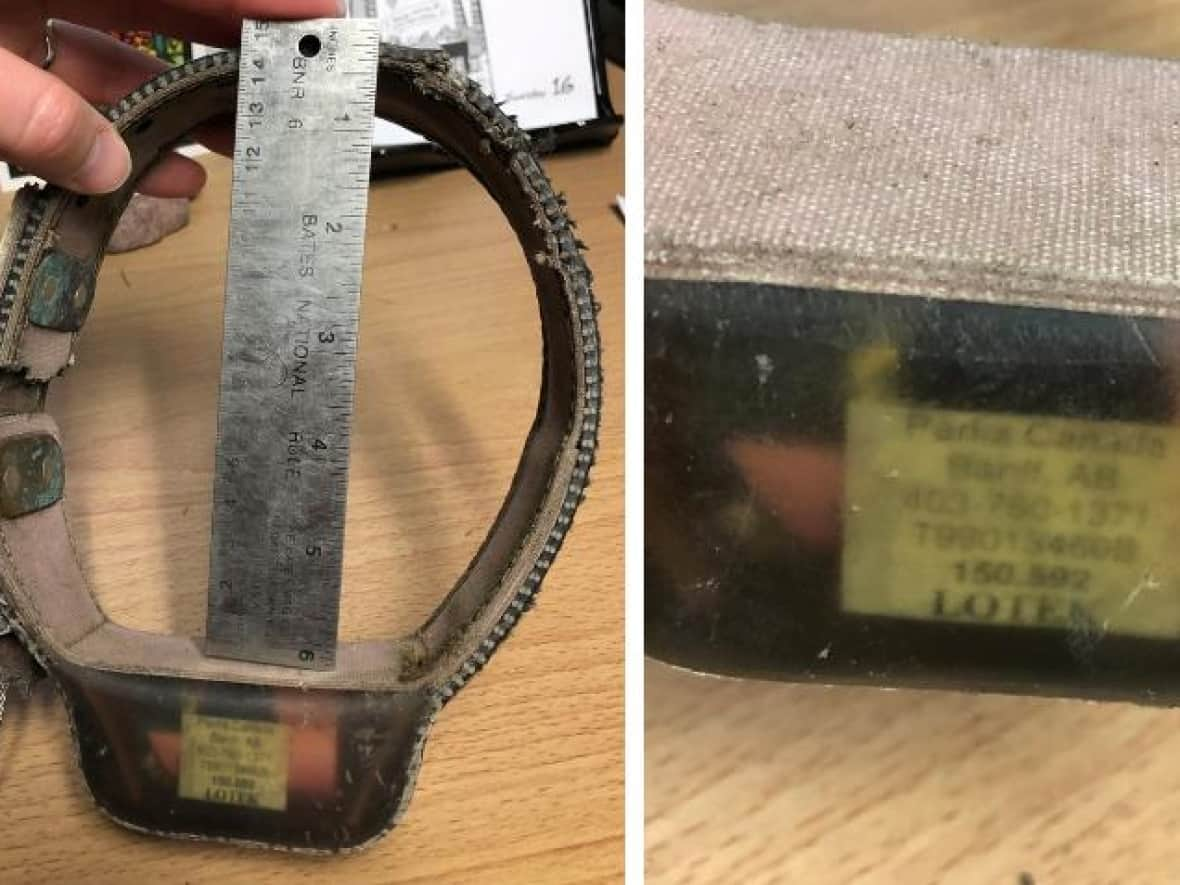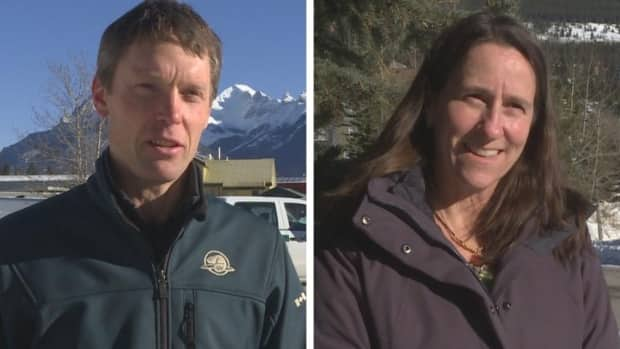What happened to Wolf 57? Collar returned to Banff from Montana 19 years later

A radio collar used to track a young female wolf in Banff National Park around two decades ago was recently discovered in Montana — nearly 500 kilometres away, park officials said.
Parks Canada wildlife ecologist Jesse Whittington says Wolf 57 was with the Fairholme pack in Banff. She was fitted with a VHF radio-tracking collar in 2001.
"We lost track of her in 2003. We did not know what happened to her," Whittington said.
Nearly two decades later, the collar was discovered last month west of Kalispell, Mont. It was returned by wildlife officials to Banff, he said.
While it's unclear what happened to the wolf, Whittington said it illustrates the importance of wildlife corridors.
"To me, the exciting thing is just how far these animals travel," Whittington said. "And the importance of these connected landscapes where animals can travel long distances and disperse and thrive."
'We clearly did not search far enough'
At the time of Wolf 57's disappearance, the Fairholme pack was home to about 15 wolves — likely one of the largest packs Banff National Park has seen, Whittington said.
Whether she was collared as part of management or a research project is unclear.

But Whittington said park officials first lost track of Wolf 57 when she made an exploratory foray down into the Elbow River through Kananaskis Country in March of 2003.
Wolf 57 did return that year to the Bow Valley, where she was last detected near Lake Minnewanka in July.
Then, she disappeared for good.
"Typically, we would hit the roads, hit the trails, try and find her," Whittington said.
"We never could find her. But we clearly did not search far enough."
The secret lives of wolves
Wolf 57's collar was found by a member of the public in dense forest in the Bitterroot Mountains, Whittington said.
"Somehow, it traveled from here to there," he said. "It's obviously long dead by now."
Although the details of Wolf 57's fate are unknown, Jodi Hilty, the president and chief scientist of the Yellowstone to Yukon Conservation Initiative, said it shows animals like wolves can operate on a large landscape-scale.
"It's pretty special that we're sort of learning the secret lives of these animals," she said.
"Unfortunately … we don't know how [the collar] got there, or even really exactly when it got there. But that's a really significant movement."

From Banff to Kalispell is about 480 kilometres, and the park wolves are travellers who can cover 30 to 50 kilometres in a day, Whittington said.
And one of the reasons Wolf 57 probably dispersed was for an opportunity to mate.
"These wolves have incredibly large home ranges, with only one pair of breeding male and female," he said.
Also known as the alpha male and female, they prevent other wolves in the pack from breeding, Whittington said.
"Occasionally, you get some packs where you get two litters within one pack. But that's relatively rare."
Protecting animals like this
Wildlife experts say it's not unusual for young wolves to disperse from packs, and travel distances vary.
Last March, for example, parks staff were able to track a young male wolf with a GPS collar as he travelled to Montana. While there, officials said, the wolf was legally shot and killed.
At the time, Kevin Van Tighem, a former Banff superintendent and biologist who is now a conservationist and author, told CBC News that there are dangers for wolves both inside and outside of parks.
In Banff, they can become prey to vehicle traffic and trains. Campers, tourists and development can also impact their safety.
Outside of parks, there are areas with regulations that allow wolves to be killed, sometimes for bounties, Van Tighem said.
And for a wolf to make a trek from one protected area to another, Hilty said the conservation of open space and wildlife corridors is critical.
Ensuring that animals can move across the landscape, and without disturbances from human activities, is important — for example, building underpasses that allow wildlife to safely cross human structures such as roads or railways.
"To protect animals like this, we not only have to think about protected areas. We have to think about large landscape conservation," Hilty said.
"So, how all of our protected areas are connected, so that these animals can continue to have these kinds of movements into the future."


